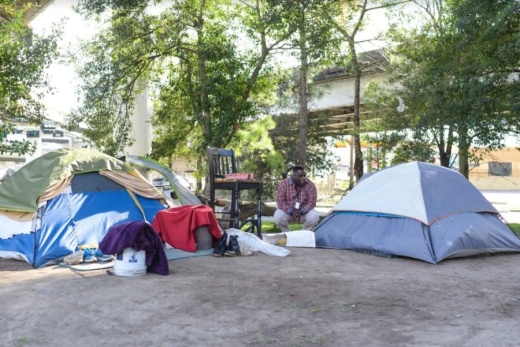“We definitely expect to see an increase because there are a lot of people who have hit financial troubles. I know the city and the county both have been providing the assistance, and there have been tranches of funding that have come about that were used up within hours,” said Ana Rausch, the vice president of program operations at the Coalition for the Homeless. “That alone tells us that there is a lot of need and there are still more people contacting the homeless coalition for rental assistance.”
The results of the 2020 annual point-in-time count published June 23 and organized by the Coalition for the Homeless Houston recorded 3,567 homeless residents in Harris County, of which 1,515 were living on the streets rather than in shelters. This year, that number climbed slightly to 3,753 with 1,551 living on the streets. Harris County makes up the bulk of the Houston-area homeless population, which also includes totals from Montgomery and Fort Bend counties. Overall, the three-county area recorded about a 40-person increase to a total of 3,974.
In 2020, for the second year in a row, about 20% of the current homeless population in the area was experiencing homelessness for the first time, according to the PIT data.
A demographic breakdown of the Houston area’s homeless population presents additional causes for concern, Rausch and Nichols said. As in previous years, Black residents are disproportionately affected by homelessness, making up 56% of the area homeless population but only 19% of the total population in 2020, the count found.
“We’re in a moment in our country’s history where we are clearly reckoning with racial disparities. Getting people experiencing homelessness are at higher risk of contracting COVID-19,” said Michael C. Nichols, the president and CEO of the Coalition for the Homeless. “For them and for our community, housing is health care.”
Among those experiencing homelessness during the 2020 count, 30% were chronically homeless, 32% had self-reported mental illness and/or substance use disorders, 10% experienced domestic violence, 7% were veterans, 6% were homeless because of a natural disaster and 7% first became homeless outside the three-county area.
While experts and even those who facilitate the count acknowledge it can be a flawed method of data collection, it is the main way the U.S. Department of Housing and Urban Development evaluates how much funding to provide metropolitan areas.
As the Houston area’s main coordinating body of homeless services, the Coalition for the Homeless combines government and nonprofit resources under one effort and has seen early success by following a housing-first model. The model shifts focus away from building up shelter bed capacity and toward finding permanent housing and supportive services for homeless residents. The method gained notice from the federal government and has helped the coalition steadily secure performance-based funding over the past decade. Since 2011, the coalition has placed over 19,000 people in permanent housing.
“If [a city] is always funding shelters, maybe it's time to look at rapid rehousing, which is when you house the person and provide supportive services while they’re housed rather than try to provide services in the shelter environment before they can receive housing,” Rausch said of the strategy.
That success, however, is in a tenuous position, members of the coalition warned. In 2019 alone, nearly 30,000 people sought services from the coalition. While all of those people are not necessarily homeless or living on the streets in that moment, they are seeking rental assistance and experiencing food insecurity, some indicators of a level of poverty that can lead to homelessness.
“We will not be able to make further progress as a homeless response system without considerable influx of resources,” Nichols said.





